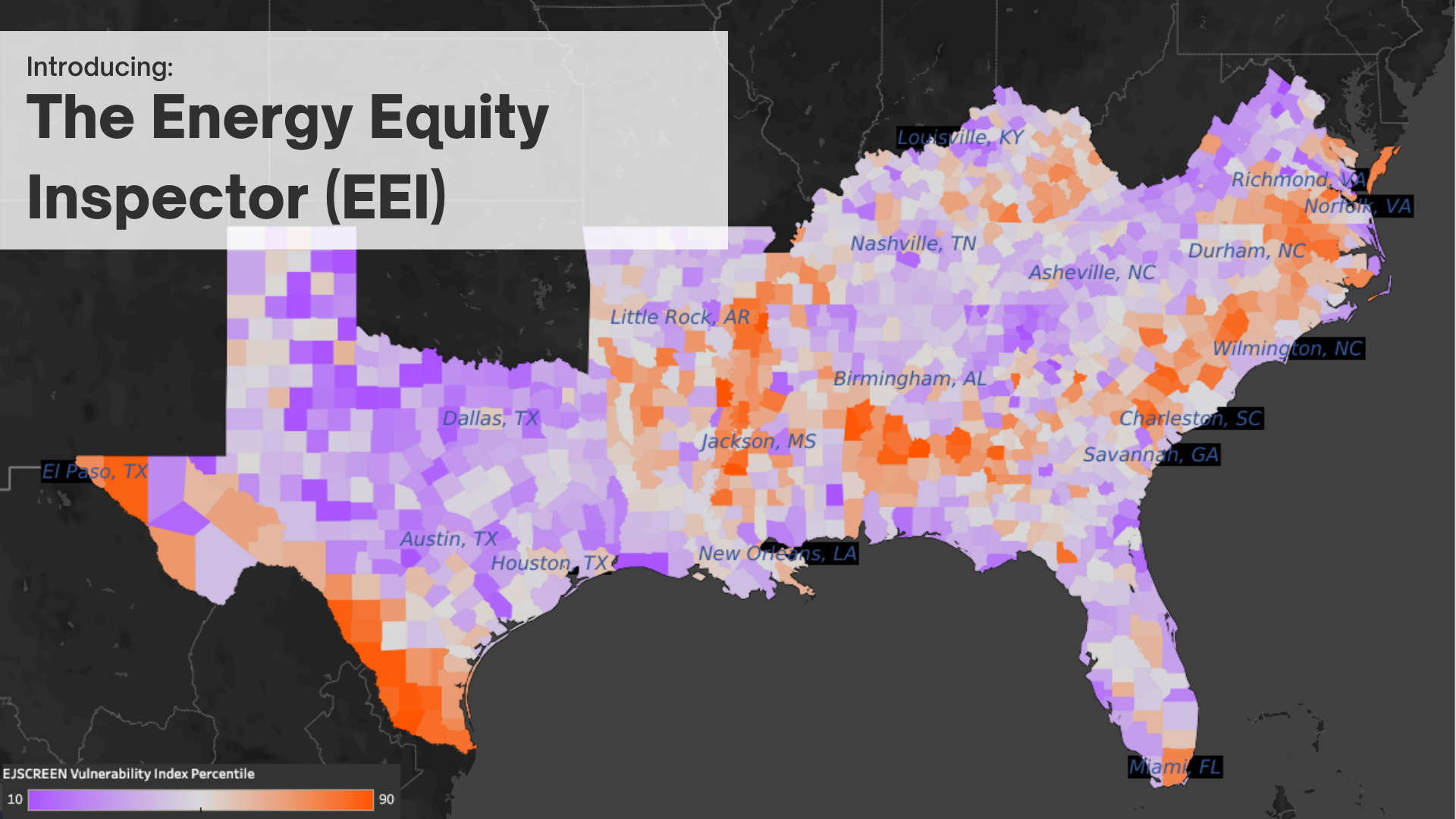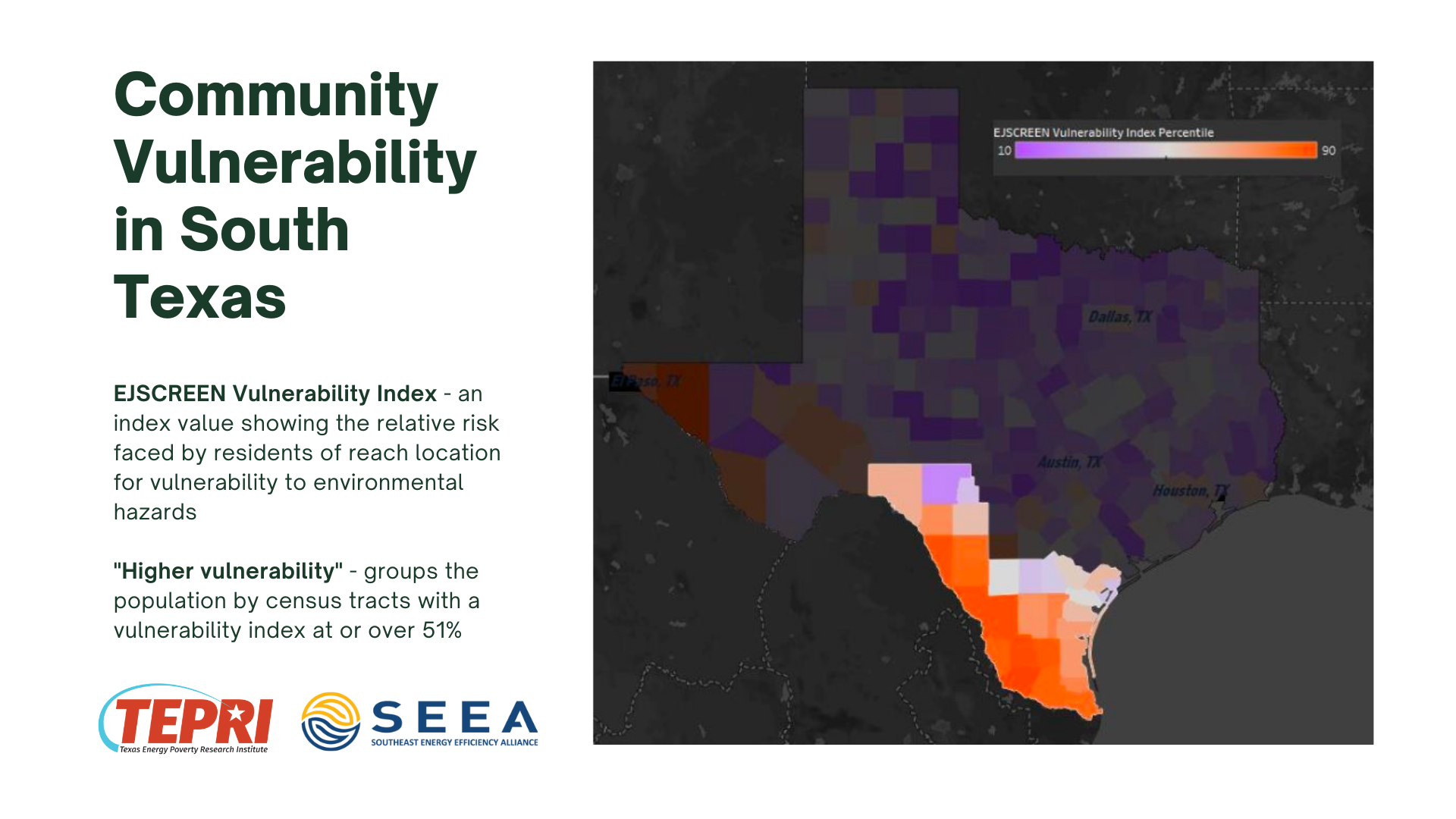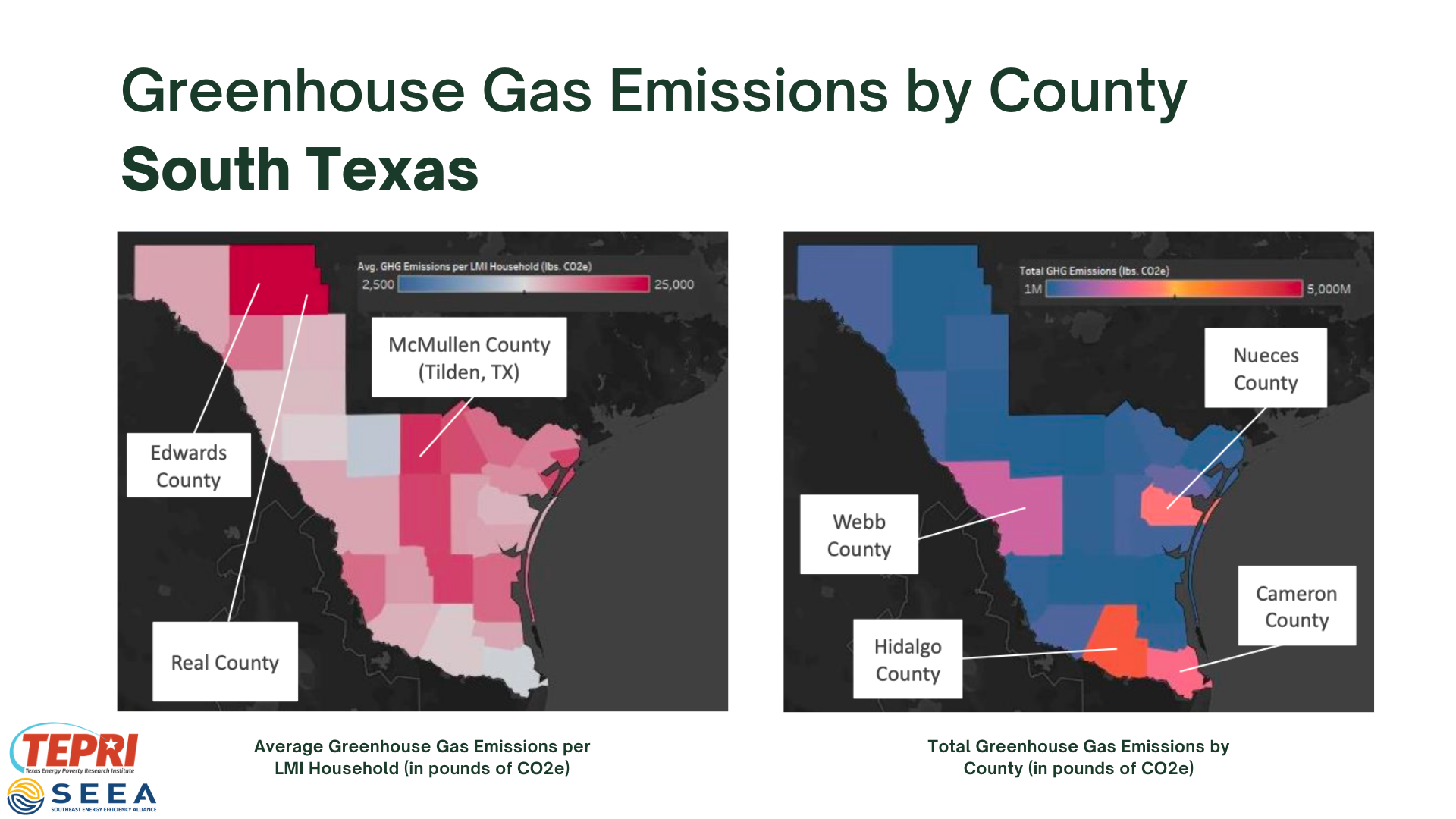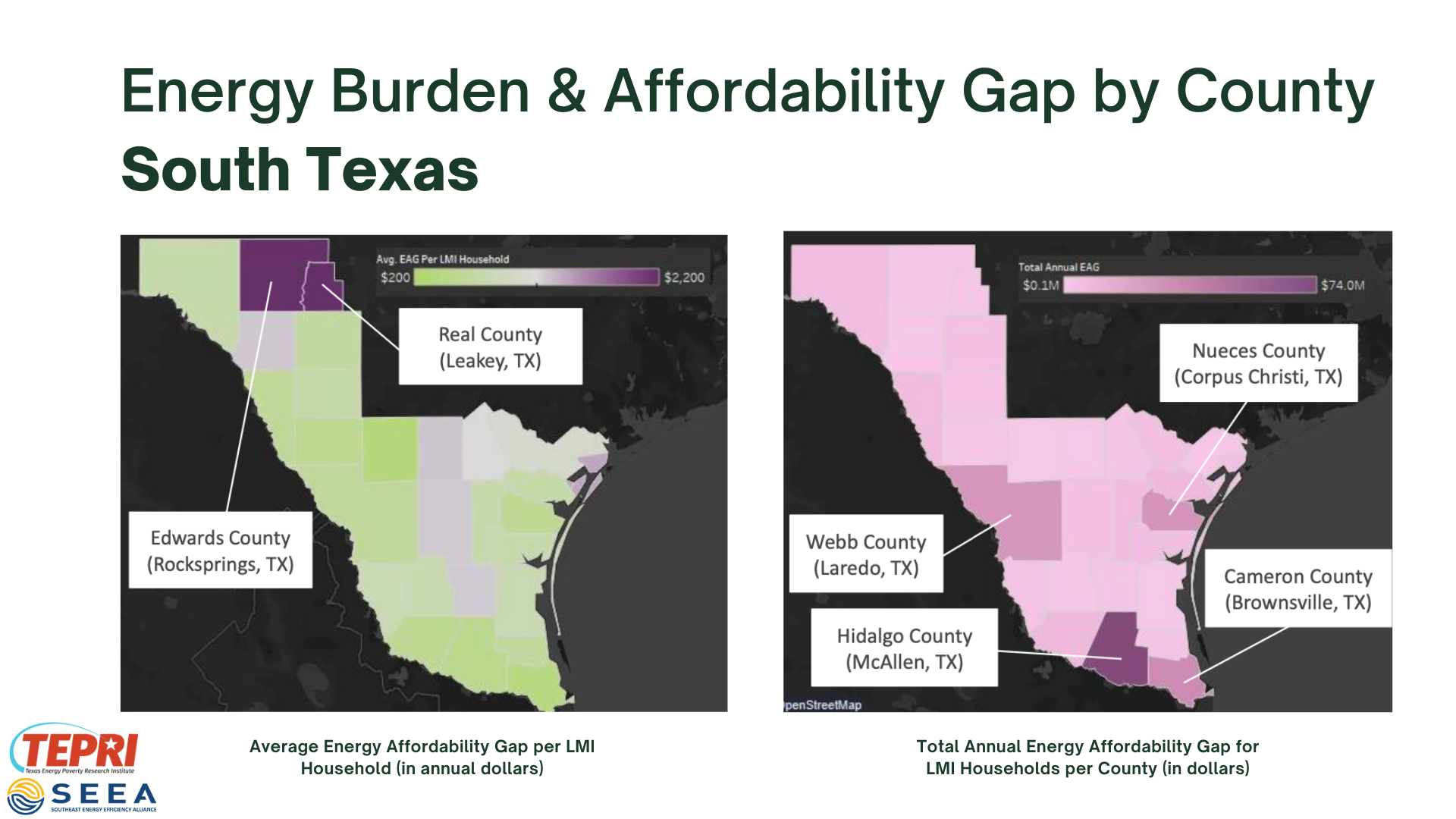By: Andrew Robison, Research Analyst, TEPRI | Evan Magallanes, Graduate Research Assistant, TEPRI | Will Bryan, Director of Research, SEEA | Joy Ward, Energy Research Associate, SEEA | Cyrus Bhedwar, Director of Policy, SEEA
TEPRI, in collaboration with the Southeast Energy Efficiency Alliance (SEEA), has co-developed a geospatial tool to help identify and highlight the depth of energy burdens and environmental impacts in communities in the southeastern United States. The Energy Equity Inspector, as it’s known, helps contextualize the unique challenges faced by certain households in this region, namely the high cost of energy and disproportionate exposure to carbon emissions. In particular, this tool allows TEPRI and SEEA to assess the disproportionate exposure borne by lower income households and communities of color. The tool is an aggregation of several publicly available datasets, including the Department of Energy’s Low-Income Energy Affordability Data (LEAD) tool, demographic indicators and environmental hazards from the Environmental Protection Agency’s EJScreen tool, utility-level greenhouse gas emissions, and housing data. The tool allows users to customize their area of interest, ranging from entire regions to specific census tracts, producing a nuanced view of energy burdens within these communities.
Figure 1 – Community Vulnerability in South Texas: The map depicts levels of community vulnerability according to the EJSCREEN Vulnerability Index. Darker orange colors correspond to counties with higher levels of vulnerability to environmental hazards.
In particular, the Energy Equity Inspector helps users visualize the disproportionate impacts of energy burden on low and moderate income (LMI) households, specifically in communities that are populated by black, indigenous, and other households of color (BIPOC). The tool has allowed TEPRI and SEEA to visualize which communities in the Southeast face the highest energy burdens and carbon emission exposure. Initial analyses identified several communities across the Southeast where low-income households experience disproportionately high energy burdens, which is characterized by utility bills that account for more than 6% of household income.
Figure 2 – Greenhouse Gas (GHG) Emissions by County in South Texas: The first image depicts the average GHG emissions per LMI household, showing counties with high concentrations of GHG emissions relative to population. Edwards, Real, and McMullen counties stand out in this category. The second image depicts the total greenhouse gas emissions per county. This indicator correlates with areas of higher population, such as Webb and Hidalgo counties.
In conjunction with SEEA, TEPRI has received funding to partner with stakeholders in Alabama’s Black Belt counties and South Texas and work together to address some of these ongoing challenges. Both regions are disproportionately affected by persistently high energy burdens, high respiratory hazards, and are home to a high percentage of low-income and BIPOC residents. These data are well established, but their intersectional quality is understated and far less understood. The Energy Equity Inspector bridges this divide by combining these data sources and mapping them onto the region to produce a clearer view of the spatial and intersectional nature of energy burden, greenhouse gas emission exposure, and other environmentally-related risks.
Figure 3 – Energy Burden & Affordability Gap by County in South Texas: The first image depicts the average energy affordability gap (EAG) in annual dollars per LMI household, highlighting counties with the highest average annual energy costs above affordable levels. Edwards and Real counties stand out in this category. The second image depicts the total annual energy affordability gap for LMI households by county. This indicator correlates with areas of higher population, such as Webb and Hidalgo counties.





